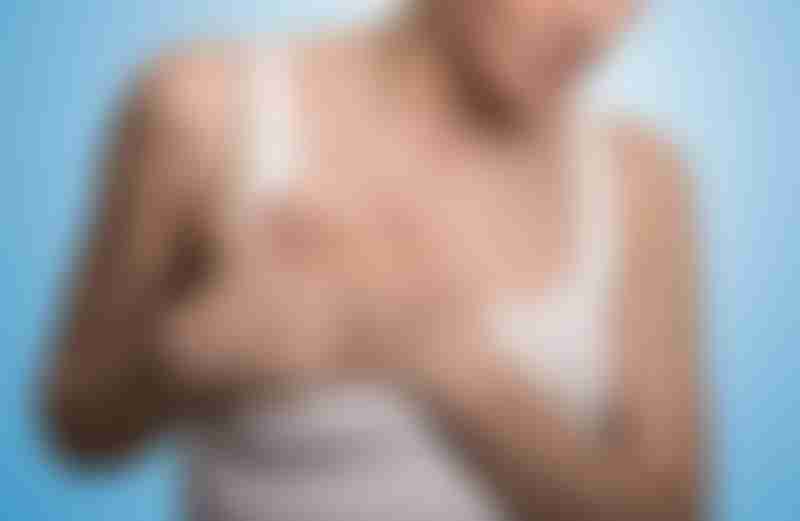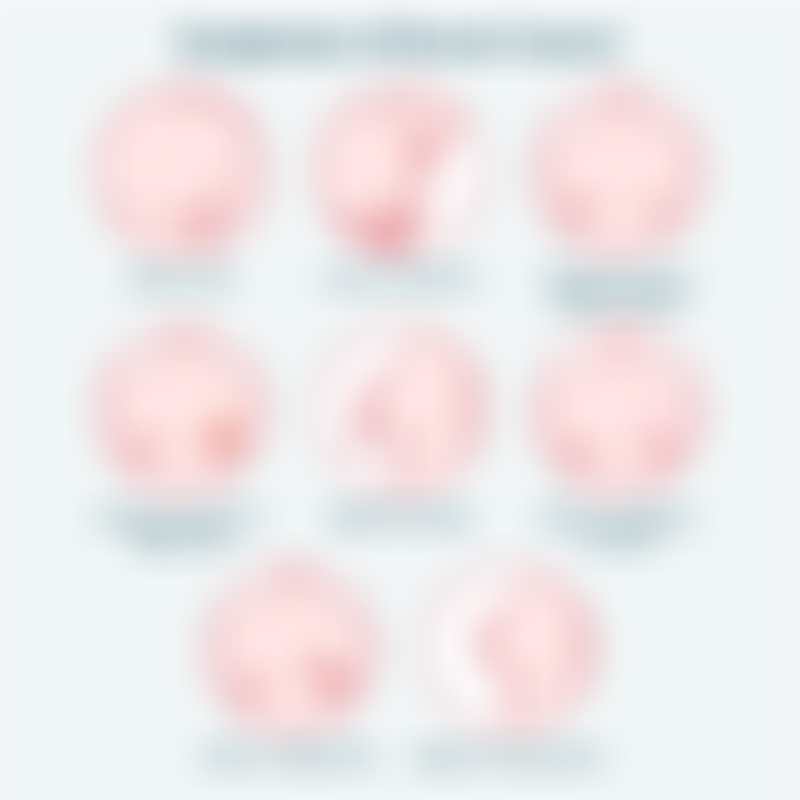The Warning Signs of Breast Cancer: What to Look Out For

Source: Shutterstock
Do I have a symptom of breast cancer?
If you suspect a symptom of breast cancer, do not overthink and stay calm. A change in the breast does not immediately mean that you have breast cancer. However, knowing the possible symptoms of breast cancer can be useful and important.
Knowing the common signs and symptoms can make a difference in early detection and diagnosis, ultimately leading to a more favorable treatment plan and outcome. It's important to prioritize your health and seek accurate information to make informed decisions. If you have any concerns, it's advisable to consult with your doctor.

Overview of breast cancer symptoms. Adapted from: Shutterstock
Common symptoms of breast cancer
Here are a few symptoms of breast cancer:
A lump in the breast
Not all breast lumps are cancerous. In fact, most breast lumps are non-cancerous. Non-cancerous lumps are called benign lumps.
Benign lumps may be:
- Breast abscesses
If you are experiencing a sore and inflamed lump in your breast, it may be due to a breast abscess. This is a pocket of pus that can develop from bacterial infections that enter through cuts in the skin, cracked nipples, or milk ducts. Breast abscesses are more commonly found in lactating females.
- Cysts
Did you know that fluid-filled sacs in your breasts are called cysts? The good news is that breast cysts are usually not cancerous and are believed to be caused by hormonal changes resulting in a fluid buildup in your breast glands. It is still best to see a doctor to confirm that it is not cancerous.
- Fibroadenomas
It's quite common for young women between the ages of 15 and 35 to come across solid, firm, and smooth lumps in their breasts, known as fibroadenomas. You need not worry, as these lumps are completely benign and are often linked with estrogen cycles. They can move around easily within the breast, so it's perfectly normal if you discover one.
- Lumps caused by fat necrosis
If you're feeling lumps in your breasts that do not hurt and are firm and round, it could be due to damaged or disintegrated fat tissue. This isn't uncommon in women who have large, bruised, or injured breasts. Lumps can also form as a result of fat necrosis, which can be caused by lumpectomy or radiation therapy.
- Galactocele (milk retention cysts)
Milk-filled masses are caused by blocked milk ducts.
- Hematomas
Blood-filled masses caused by injury or surgery.
- Sclerosing lesions
Extra tissue growth within breast lobules normally occurs due to normal aging processes.
A lump in the underarm/armpit
If you find a lump in your underarm/armpit area, it is likely an enlarged lymph node. Lymph nodes are small kidney-shaped organs with white blood cells that help your immune system fight infections. When viruses and bacteria are detected, they may cause temporary swelling in the lymph nodes. However, if you experience painful or persistent lumps, make sure to schedule an appointment with a doctor for a check-up.
Persistent swelling and/or tenderness in the breast or nipple
If you notice your breasts feeling swollen or tender, it is most probably normal and could be due to hormonal changes. This is especially common before or during your menstrual cycle and even during pregnancy or breastfeeding. However, if the swelling or tenderness persists and is accompanied by other symptoms, especially an orange-peel-like texture of the breast, it is best to see a doctor to get it checked out. They can give you a better idea of what is going on and offer any necessary treatment.
Clear or bloody nipple discharge
Clear or bloody fluid discharge (not to be confused with breast milk) from the nipple(s) may be caused by many different reasons and conditions, including breast cancer. It is recommended to seek further investigation if you notice such discharge.
Inverted (retracted) nipple
Inverted or retracted nipples are when the nipple points inward toward the breast instead of outward. If the nipples have been inverted from birth or have gradually become inverted over time, it is not usually a cause for concern. However, if the nipples suddenly invert, it may be due to an underlying medical condition and should be checked by a doctor.
Changes in breast and/or nipple skin
Puckering, dimpling, redness, and rashes on the breast or nipple skin may be a sign of breast cancer. However, they could also be caused by other non-cancerous breast or skin conditions.
Unusual breast pain or discomfort
It is completely normal to experience breast pain every now and then, and it does not necessarily mean you have breast cancer. However, if you have persistent and abnormal breast pain that is happening in one specific area of your breast and is accompanied by other symptoms, it is best to check with a doctor. They will be able to give you a better idea of what is going on.
Unexplained changes in the size or shape of the breast
Any changes in the breasts that are unrelated to menstrual periods or pregnancy could be a sign of breast cancer or other breast-related medical conditions.
Symptoms of other forms of breast cancer
There are different symptoms for certain forms of rarer breast cancers or tumors, which include:
Overcoming the fear of getting tested
It can be overwhelming to process all the symptoms listed. Take your time and carefully check if you have any of them. If you do, it's natural to feel concerned but remember that there could be other reasons for them besides the ones listed.
If you're feeling hesitant about going to the doctor because you're afraid of the outcome or the tests you might need to take, please know that seeking medical advice is really important. Your health and well-being matter the most, and it's necessary to consult with your doctor for a proper diagnosis and treatment. Detecting and treating breast cancer early on is easier and more effective than in later stages, so don't hesitate to take action for your own health.